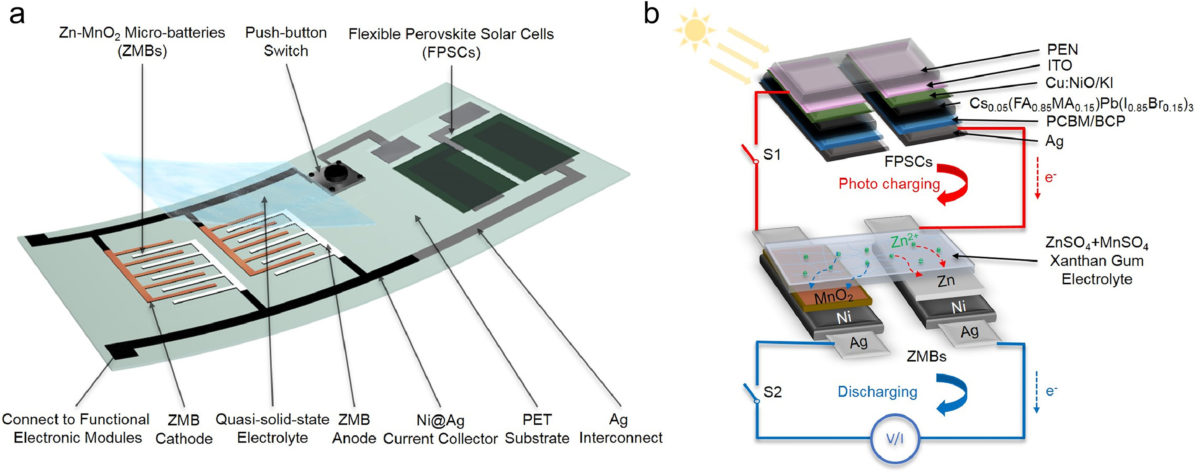Thirty seconds of sunlight is all it takes for a prototype battery demonstrated by Surrey's Advanced Technology Institute (ATI) to charge with sufficient energy to power other wearables for periods of 10 minutes.
The photo-rechargeable system merges stable and ultra-high-rate quasi-solid-state zinc-ion micro-batteries and flexible perovskite solar cells, enabling electronics to operate continuously without plug-in charging.
“Our prototype could represent a step forward to how we interact with wearables and other internet-of-things devices, such as remote real-time health monitors,” said Jinxin Bi, a PhD candidate at ATI and the first author of the paper.
Miniaturized flexible photo-rechargeable systems show bright prospects for wide applications in internet of things, self-powered health monitoring and emergency electronics. However, conventional systems still suffer from complex manufacturing processes, slow photo-charging and discharging rate, and mismatch between photovoltaic and energy storage components in size, mechanics, and voltage, and other aspects.
The ATI researchers described their study in Energy Storage Materials. They demonstrated a facile inkjet printing and electrodeposition approach to fabricate such highly integrated flexible photo-rechargeable system.
Popular content
Specifically, they first introduced a Ni protective layer into ZMBs to stabilize the battery configuration and facilitate enhanced electrochemical performance. The optimized ZMB exhibits ultrahigh volumetric energy density of 148 mWh cm−3 (16.3 μWh cm−2) and power density of 55 W cm−3 (6.1 mW cm−2) at the current density of 400 C (5 mA cm−2).
As a result, the embedded perovskite solar cells showed excellent performance – enough to charge the battery and create a self-charging system capable of offering energy autonomy in miniaturized wearable electronics. The ATI researchers said the system has particularly high energy and volume density, comparable to state-of-the-art micro-batteries and supercapacitors.
“The unique features in our ultrafast photo-rechargeable system could promote wide applications in self-powered wearable internet-of-things, autonomous power systems and emergency electronics,” said Yunlong Zhao, project co-lead. “In addition, it will broaden the perception and insight of designing the next generation of miniaturised flexible photo-rechargeable systems.”
This content is protected by copyright and may not be reused. If you want to cooperate with us and would like to reuse some of our content, please contact: editors@pv-magazine.com.



Wonderful Really good break thourg